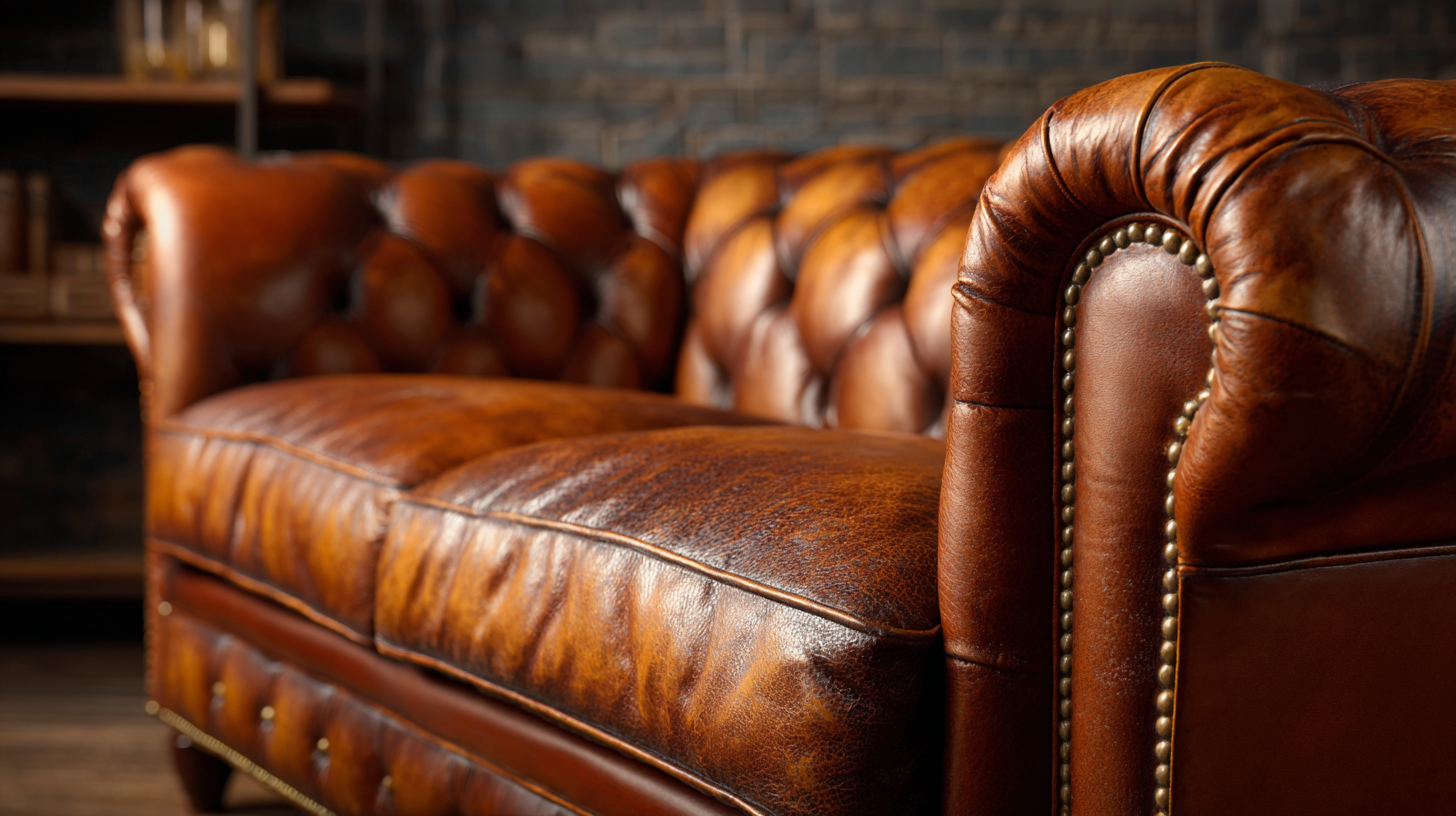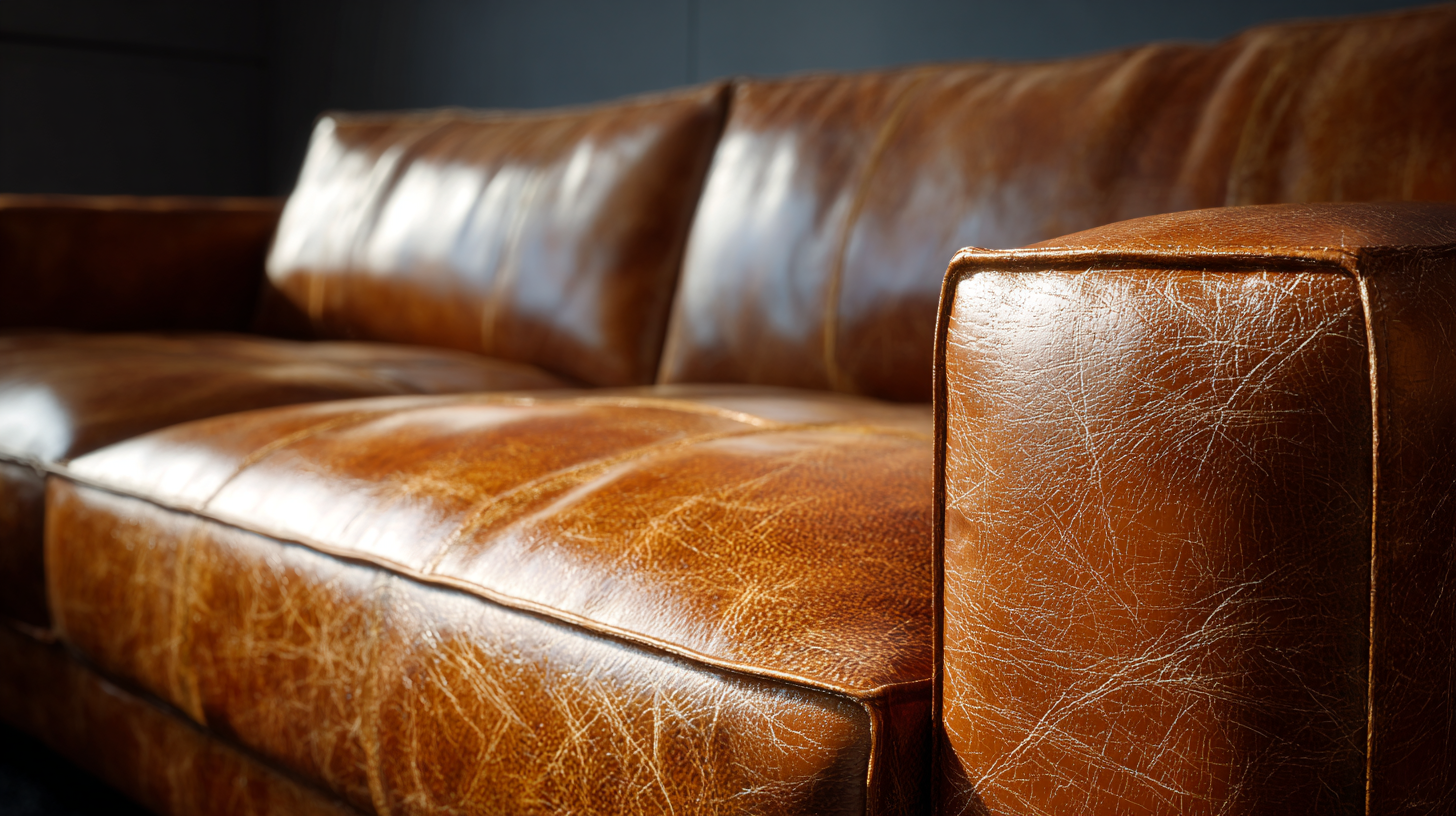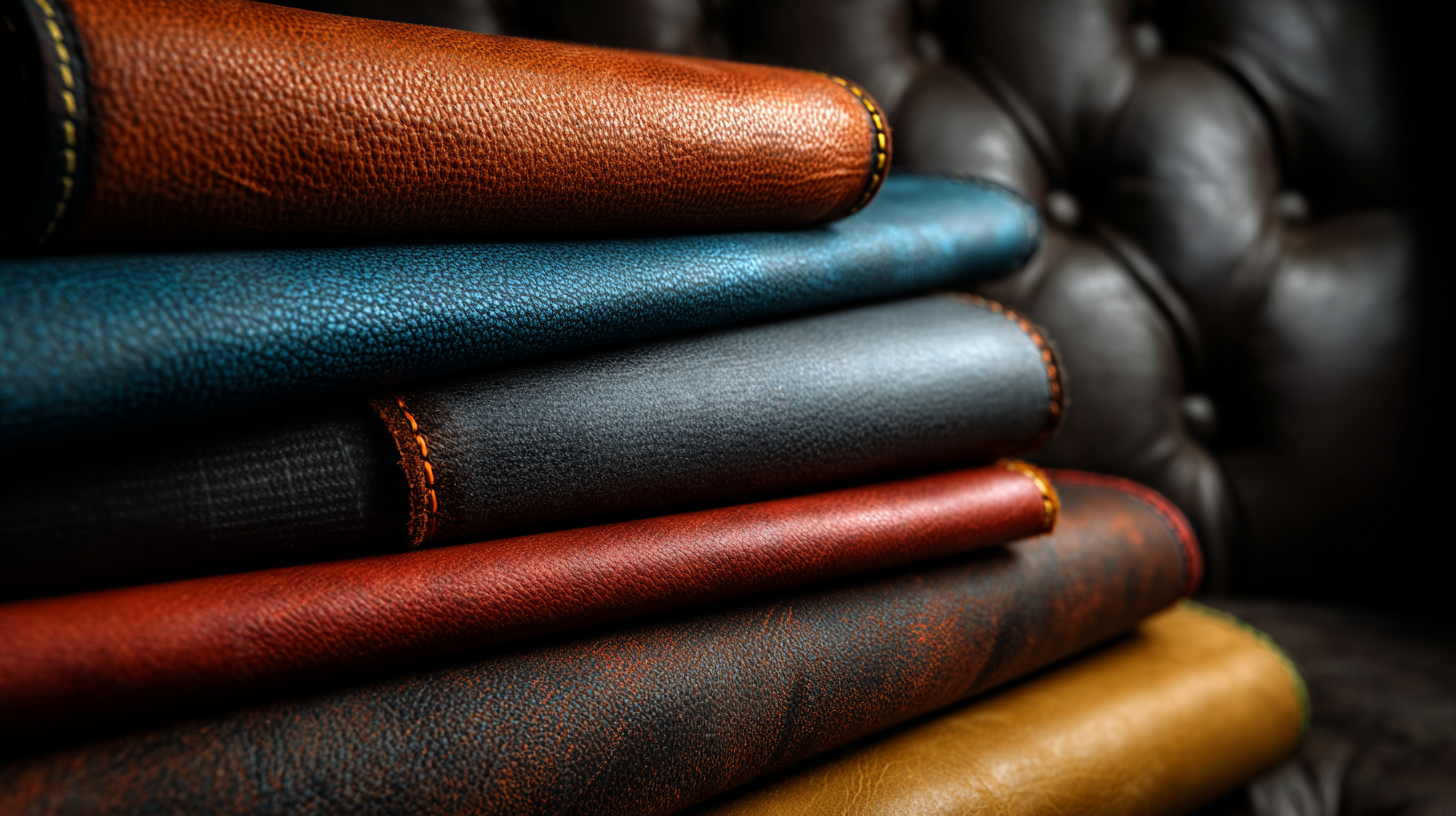Exploring the Future of Best Leather Furniture: Innovative Technologies and Alternative Materials for 2025
 As we look towards 2025, the landscape of leather furniture is poised for transformation, driven by innovative technologies and alternative materials. The global leather furniture market, valued at approximately $31 billion in 2022, is anticipated to expand at a compound annual growth rate (CAGR) of over 5% through the next several years, according to industry reports. This growth is not only fueled by consumer demand for luxury and durability but also by an increasing focus on sustainability and ethical sourcing. With advancements in materials science, manufacturers are exploring options such as plant-based leathers and high-performance synthetic alternatives that promise to deliver the aesthetic and tactile qualities of traditional leather while minimizing environmental impact. In this ultimate guide, we will delve into the emerging trends, innovative technologies, and the future direction of leather furniture, highlighting the balance between luxury, comfort, and sustainability.
As we look towards 2025, the landscape of leather furniture is poised for transformation, driven by innovative technologies and alternative materials. The global leather furniture market, valued at approximately $31 billion in 2022, is anticipated to expand at a compound annual growth rate (CAGR) of over 5% through the next several years, according to industry reports. This growth is not only fueled by consumer demand for luxury and durability but also by an increasing focus on sustainability and ethical sourcing. With advancements in materials science, manufacturers are exploring options such as plant-based leathers and high-performance synthetic alternatives that promise to deliver the aesthetic and tactile qualities of traditional leather while minimizing environmental impact. In this ultimate guide, we will delve into the emerging trends, innovative technologies, and the future direction of leather furniture, highlighting the balance between luxury, comfort, and sustainability.
Innovative Leather Alternatives: Exploring Sustainable Materials for Furniture
As the demand for sustainable home furnishings continues to rise, the furniture industry is poised to embrace innovative leather alternatives. According to a report by Grand View Research, the global eco-leather market is anticipated to reach $48 billion by 2025, driven largely by consumer preference for environmentally friendly materials. This shift not only addresses ethical concerns related to traditional leather sourcing but also promotes a circular economy by utilizing recycled and renewable resources.
Recent advancements in materials science have led to the development of alternatives that closely mimic the look and feel of leather, such as mushroom leather, made from mycelium, and lab-grown leather derived from plant cells. A study from the Ellen MacArthur Foundation highlights that these sustainable materials can significantly reduce carbon emissions by up to 80% compared to traditional leather production methods. As consumers become more environmentally conscious, incorporating these innovative alternatives into furniture design not only enhances marketability but also meets the growing demand for sustainable living solutions.
Exploring the Future of Best Leather Furniture: Innovative Technologies and Alternative Materials for 2025
| Material | Sustainability Rating | Durability (Years) | Comfort Level | Cost (per sq. ft.) |
|---|---|---|---|---|
| Recycled Leather | High | 10 | Medium | $15 |
| Mushroom Leather | Very High | 7 | High | $25 |
| Cork Leather | High | 8 | Medium | $20 |
| Piñatex (Pineapple Leather) | Very High | 6 | High | $30 |
| Ultrasuede | Medium | 12 | Very High | $18 |
Smart Technologies in Leather Furniture: Enhancing Comfort and Functionality
As we look towards 2025, the landscape of leather furniture is poised to undergo a transformation driven by smart technologies. The integration of IoT (Internet of Things) capabilities into leather furnishings not only enhances comfort but also revolutionizes functionality. Imagine a leather sofa equipped with sensors that adjust its firmness based on the user’s posture and preferences. This innovative approach ensures optimal support tailored to individual needs, creating an immersive experience that transcends traditional furniture.
Additionally, advancements in smart textiles are making their way into leather furniture, allowing for features like temperature control and built-in sound systems. This not only enhances the user experience but also elevates the standard of luxury in home décor. With the ability to connect to smart home systems, leather furniture can now respond to voice commands or smartphone apps, providing unparalleled convenience. The fusion of design and technology is set to reshape our living spaces, making smart leather furniture a cornerstone of modern homes.

The Role of Eco-Friendly Practices in Leather Furniture Production by 2025
The leather furniture industry is undergoing a significant transformation as we approach 2025, particularly in the realm of eco-friendly practices. According to a recent report by Market Research Future, the global eco-friendly furniture market is expected to reach $48 billion by 2025, with a compound annual growth rate (CAGR) of 9.2%. This shift is driven by increasing consumer awareness surrounding sustainability, leading manufacturers to adopt greener production methods and materials.
For instance, several brands are now investing in vegetable-tanned leather, which utilizes natural tannins rather than harmful chemicals, drastically reducing environmental impact.
Moreover, alternative materials are gaining traction as part of the move toward sustainable practices in leather furniture production. Plant-based leather, made from materials like pineapple leaves or apple peels, is emerging as a viable substitute that not only minimizes waste but also appeals to the eco-conscious consumer. A survey conducted by the International Furniture and Home Improvement Association revealed that 70% of consumers prioritize sustainability when choosing furniture. As the demand for sustainable products rises, companies are likely to innovate further, integrating technology and eco-friendly practices that align with global sustainability goals. By 2025, the fusion of innovative technologies with respect for the environment will redefine the leather furniture landscape.

Design Trends: Merging Aesthetics with Technology in Leather Furniture
As we venture into 2025, the intersection of technology and aesthetics in leather furniture design is becoming increasingly prominent. New innovations are reshaping consumer expectations and experiences. According to a recent report from the Furniture Today Research Institute, nearly 60% of consumers now prioritize sustainable materials in their furniture selections, which encourages brands to explore alternative materials such as vegan leather and bio-based composites. These alternatives not only meet the growing demand for eco-friendly products but also maintain the luxurious appearance and feel that leather furniture is known for.
Incorporating smart technology is another trend enhancing the leather furniture experience. From temperature-controlled upholstery to integrated wireless charging stations, designers are finding ways to seamlessly blend functionality with elegance. A survey by the International Design Association revealed that 75% of designers believe that smart features will be a standard in furniture by 2025. This melding of aesthetics and technology allows consumers to enjoy comfort and convenience while making bold design statements.
Tip: When shopping for leather furniture, consider options that incorporate both innovative technology and sustainable materials. Look for brands that provide transparency about their sourcing and production processes. This not only enhances your living space but also aligns with your values in today’s eco-conscious market.
Consumer Preferences: Shifts in Buying Behavior Toward Sustainable Furnishings
As we navigate through 2025, the landscape of leather furniture is witnessing a remarkable transformation driven by consumer preferences for sustainability. Today's buyers are increasingly inclined to seek out furnishings that not only complement their aesthetic desires but also align with their ethical values. This shift is prompting manufacturers to rethink traditional leather sourcing and explore innovative technologies and alternative materials that reduce environmental impact.
In response to this growing demand, industry leaders are investing in sustainable practices, such as sourcing leather from ethical farms and utilizing plant-based materials that mimic the luxurious feel of leather. Additionally, advancements in production techniques allow for the creation of durable furnishings that are both eco-friendly and stylish.
Consumers are now educated and passionate about their choices, leading to a preference for items that tell a story—materials that are traceable and responsibly produced are becoming the new norm in furniture shopping. As we look to the future, the combination of consumer awareness and technological innovation is set to redefine leather furniture, making sustainability synonymous with luxury.
